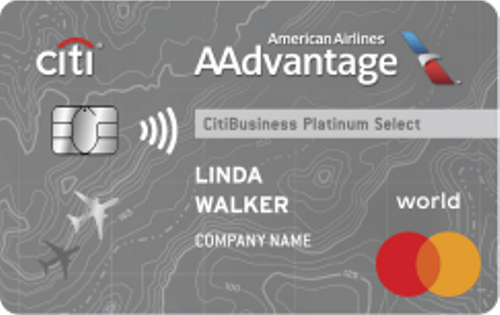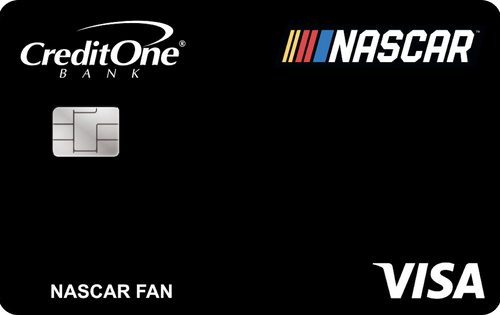
|
|
You might be using an unsupported or outdated browser. To get the best possible experience please use the latest version of Chrome, Firefox, Safari, or Microsoft Edge to view this website. |

The credit card had a humble beginning. Diners’ Club introduced the first general-purpose credit card in 1950, followed eight years later by the first bank issued credit card. Americans have been using plastic credit cards since 1959 when American Express introduced plastic to replace its cardboard predecessor.
Today, credit cards have become ubiquitous in the United States. According to the Federal Reserve, Americans used their credit cards to pay a record 40.8 billion times in 2017, and those payments totaled $3.6 trillion. Statista reports more than a billion credit cards in the U.S. today and, according to the Federal Reserve, credit card debt now surpasses $1 trillion.
There are several reasons for the explosion of credit card use. One is the security and convenience of using a card instead of lugging around loads of cash. Another reason is the boom in online shopping. There’s also the number of banks offering compelling cash and travel rewards to their card users. Some credit card issuers offer a 0% introductory APR on purchases or balance transfers as a way to market their cards. And then there is a credit card’s ability to help consumers build a credit history and score that will help them later if they want to take out a mortgage, borrow for a car, or do anything else (like rent an apartment) that might require a credit check.
In this Forbes Guide to Credit Cards, we cover these and other topics you need to decide whether and how credit cards should be part of your financial life.
What Is a Credit Card?
Credit cards, which are a form of revolving credit, work differently than installment loans. With an installment loan, such as a car loan, a consumer borrows a fixed amount of money at a fixed or variable interest rate. A minimum monthly payment is set in advance, and it doesn’t change over the course of the loan.
With credit cards, it’s a different ball game. First, most credit cards come with a credit limit. A credit limit of $10,000, for example, enables a consumer to charge up to $10,000 on the card. Of course, there is nothing requiring the cardholder to use any or all of the available credit.
Second, the minimum payment on a credit card varies based on the outstanding balance. As the outstanding balance goes up, so does the minimum payment. Conversely, as the balance goes down, the minimum monthly payment also goes down.
Third, there’s no term on revolving debt. A car loan, for example, typically has a set term (e.g., 5 years). With a credit card, a consumer can continue to use the card so long as the balance doesn’t exceed the card’s credit limit.
The Types of Credit Cards
There are several different types of credit cards. These include cards for those with no credit or poor credit, business cards, and those looking for rewards. Here are the major types of credit cards available today.
Secured Credit Cards
In the world of credit cards, you’ll find there are two broad categories: secured and unsecured. Both report your payment history to credit reporting bureaus. Most credit cards you see advertised are unsecured, meaning they don’t require a refundable deposit to use them. Secured credit cards, on the other hand, require a security deposit to open the account.
Secured cards will likely have the word “secured” attached to its name—for example, there’s the Discover it® Secured card *. To use this card, you’d deposit $200 to open a $200 line of credit with Discover. After eight months, your account, along with your other credit accounts, are reviewed monthly to evaluate your credit management. At that point, assuming you have paid off your balance every month and managed your other accounts well, Discover will likely refund your deposit and switch you to an unsecured card.
Unsecured Credit Cards
Unsecured credit cards are what most people think of as traditional cards. What follows are various types of unsecured credit cards.
Student Credit Cards
A student credit card is designed for college students with limited or no credit. Student cards usually come with low to no annual fees and an educational component in the form of rewards. Some banks and credit unions will offer statement credits for maintaining a certain grade point average, for example. Other card features include cash back or rewards points. The credit limit on student cards is often low given the applicant’s limited income and credit history.
Business Credit Cards
There are two types of business credit cards: small business and corporate. Card issuers will have different qualifications for each card. For example, what one bank considers a small business, another might not.
A small business credit card operates like a personal credit card and it’s commonly used to establish credit for a young business. It’s similar to a personal credit card in that the small business may not have enough credit history to get a corporate card and so the business owner applies for credit through their own name.
Businesses that have more scale and a credit rating from one of the business credit rating agencies meet the requirements for a corporate credit card. Corporate credit cards give companies with millions in revenue the flexibility of authorizing multiple users and earning business related rewards like air mileage.
These cards aren’t hard to come by so you can shop around to find one that meets your business needs.
Reward Credit Cards
Credit cards offer a variety of valuable rewards. From cash back to free travel, rewards credit cards seek to build loyalty with card holders by rewarding them when they use the card.
Here are the major types of reward credit cards:
Cash Back Credit Cards
A cash back credit card offers discounts on purchases by giving cardholders cash in the form of a check, direct deposit or a statement credit. Cash back rewards typically range between 1% to 6% on purchases. For cards that pay the same rewards percentage on all purchases, the rewards range is from 1% to 2% in most cases. As the rewards rate rises above 2%, the rewards are limited to specific categories of purchases.
When choosing a cash back credit card, look for one that matches your spending habits. For example, if you spend a lot on groceries, you could choose a card that gives you a higher cash back rate at grocery stores. If you value simplicity, however, you could choose a card that offers 2% in unlimited cash back on all purchases.
Another feature to consider is monthly and annual fees. If your annual fee is equal to or bigger than your one-year cash back earning potential, it may not be a good fit for you unless you’re looking for the cash back to cover that fee. Likewise, if your interest rate is high and you will likely carry a balance, then you may not even get a chance to enjoy cash back rewards, since those rewards are likely to be more than offset by the interest you pay.
Look at when you can redeem the cash back, as well. Some cards give cash back after you’ve earned a number of points at certain merchants, others give cash back after a certain number of days or months, and some give you instant cash back. Read the redemption process for earning cash back to determine if its worth your time and energy.
Travel Reward Credit Cards
Credit cards are tools that can be aligned with your lifestyle. Travelers looking to earn mileage or discounts on hotels and travel packages have travel reward credit cards as an option. There are bank cards that are great for general travel and then there are branded cards that are great for flights on specific airlines or stays at specific hotel chains.
You could get a travel rewards card through a financial institution such as your bank. Bank of America® Travel Rewards credit card offers an unlimited 1.5 reward points for every dollar spent, and you also Earn 25,000 online bonus points after you make at least $1,000 in purchases in the first 90 days of account opening – that can be a $250 statement credit toward travel purchases.
Some travel reward credit cards double as branded cards. Airlines offer credit cards that help you accumulate frequent flier points, which you can redeem for flights, free checked luggage, preferred boarding or discounts with their partners like other airlines. American Airlines partnered with Citibank to produce the Citi® / AAdvantage® Platinum Select® World Elite™ Mastercard®*, which comes with all sorts of bells and whistles such as the opportunity to Earn 50,000 American Airlines AAdvantage® bonus miles after spending $2,500 in purchases within the first 3 months of account opening.
Hotel reward cards carry similar benefits. You would use a hotel card to earn points towards discounted rates, room upgrades, extended checkout or a free stay. The IHG Premier Rewards Clubcard gives free stays to cardholders on their card’s renewal anniversary.
Maybe hotel and flight discounts don’t excite you? Car rental companies like Avis offer credit cards, too.
Once again, pay attention to the fine print of how you can earn points, as well as how you will redeem those points. Some travel rewards programs may require you to cover your own taxes when redeeming your travel points—meaning, for example, that a free flight might not be really free.
Branded Credit Cards
Stores and other merchants partner with card issuers to create cards offering rewards or cash back. The Amazon Prime Rewards Visa Signature by Amazon.com, Chase and Visa Signature gives Amazon Prime members 5% cash back on purchases made on the site and at Whole Foods stores.
Charge Cards
Unlike credit cards, which allow you to carry a balance into the following month for whatever interest charge you qualify for, charge card issuers require that you pay your balance off every month. If you choose not to pay the balance off, you will incur a fee.
Another difference is the credit limit. Charge cards do not have a pre-set spending limit; however, there are some retail charge cards that do. No pre-set spending limit doesn’t mean you access to endless credit. The bank can limit your credit to your regular usage of the card or your payment history.
Though charge cards are no longer as commonplace as credit cards, some financial institutions still offer them. They are helpful tools for people who prefer to not have long-term debt.
These cards may come with rewards programs, too. With American Express charge cards, for example, reward points could be one to five times your purchase amount. The only downside is these cards tend to come with high annual fees.








